Argentina Defies the Americas’ Crisis of Democracy
As regional powers backslide and Donald Trump looms, one nation offers a popular, progressive alternative. A dispatch from Buenos Aires.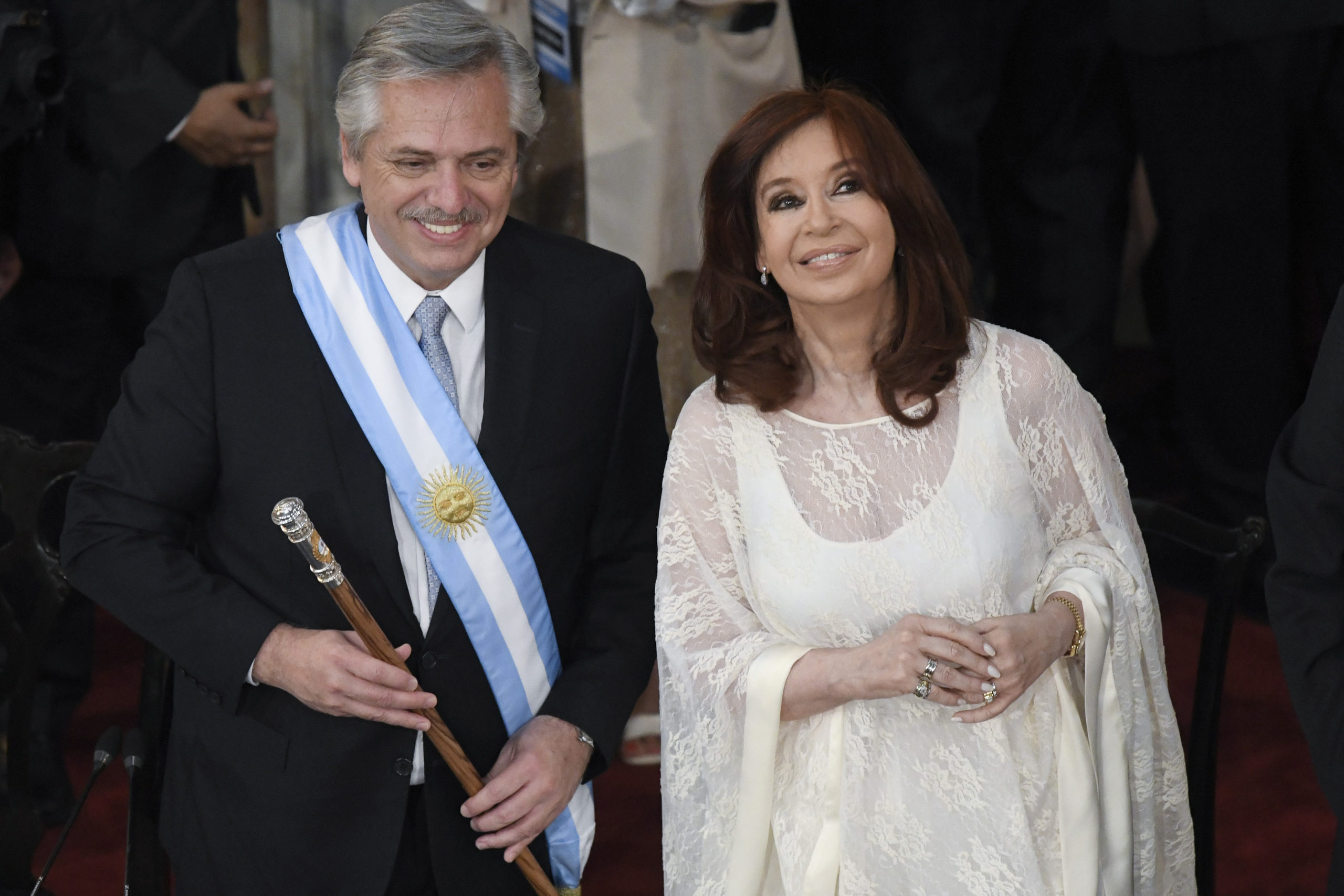 President Alberto Fernández and Vice President Cristina Fernández de Kirchner take the oath of office in Buenos Aires this month. (Gustavo Garello / AP)
President Alberto Fernández and Vice President Cristina Fernández de Kirchner take the oath of office in Buenos Aires this month. (Gustavo Garello / AP)
Everything grinds to a halt in the Buenos Aires heat. Pedestrians retreat indoors, shops can close for hours at a time, and the city itself seems to buckle in the sub-tropical humidity. So when a clutch of sanitation workers marched slowly up a cordoned-off Avenida Rivadavia earlier this month, the sun beating down on their neon vests, dozens of those who had defied temperatures in the 90s to support President-elect Alberto Fernández took notice, briefly erupting in applause. The workers grinned broadly, and several made the “V” for victory hand sign synonymous with Peronism, as well as the new coalition party Frente De Todos (Everyone’s Front).
Inside the Palace of the Argentine National Congress, Fernández delivered his inaugural address, laying out his vision for a more egalitarian society and a new social contract. Fernández, who defeated conservative incumbent Mauricio Macri by just shy of 8% in the October elections, acknowledged: “Los Argentinos hemos aprendido así, que las debilidades y las insuficiencias de la democracia solo se resuelvan con mas democracia.” (“We Argentinians have learned that the weaknesses and insufficiencies of democracy can only be resolved with more democracy.”)
In something of a departure from his Peronist predecessors, he also pledged to fulfill the dream of Rául Alfonsín—a member of the once-rival Radical Party. “Cuando mi mandato concluya, la democracia Argentina estará cumpliendo 40 años de vigencia ininterrumpida,” Fernandez closed. “Ese día quisiera poder demostrar que Raúl Alfonsín tenía razón.” (“When my term ends, Argentinian democracy will complete 40 uninterrupted years. That day I wish I could show Raúl Alfonsín that he was right.”) Alfonsín, who served as Argentina’s first democratically elected president following the military dictatorship that ruled from 1976-83, had famously pledged that: “Con democracia, se come, se cura y se educa.” (“With democracy, you eat, heal and educate.”)
Like much of the West, Latin America finds itself at a crossroads. After 15 years of center-left governance, Uruguay has turned to the right. Austerity measures have triggered mass demonstrations in Chile, Colombia and Ecuador, with the state cracking down violently in each, while democracy backslides in Brazil and Bolivia—the latter the recent victim of what deposed President Evo Morales has called a U.S.-backed coup. Mexico under President Andrés Manuel López Obrador and Argentina stand alone among the region’s powers offering a popular, democratic alternative to authoritarianism and outright fascism. But whether the latter’s return to Peronism signals a greater pendulum swing toward social democracy or merely proves the exception to a new world order remains an open question.
To understand how Argentina has managed to avoid the kind of civil unrest that has seized its South American neighbors, and why it’s positioned to lead a left-wing revival on the continent despite an economy marred by runaway inflation and a fiscal deficit in excess of $100 billion, one must first examine its response to the junta government known as “El Proceso de Reorganización Nacional” (“The National Reorganization Process”).
“Argentina is the only South American country that has ruled—and continues to rule in a series of significant civil judgments—against those who perpetrated the crimes of its dictatorship in the 1970s,” says María Esperanza Casullo, professor at the Universidad de Rio Negro and the author of “Por Qué Funciona El Populismo?” (“Why Does Populism Work?”). “This isn’t just important for legal reasons,” she notes, “but because Argentina has maintained a series of democratic habits and commitments that don’t exist elsewhere. We see, for example, that the inheritance of Pinochetismo (1973-90) is much deeper in Chile [than the junta’s] in Argentina. At the same time, Argentina’s political parties—and not just the Peronist party—are big, with deep roots in civil society. And so they have the capacity to channel the demands of different unions and social movements, be they youth groups or women’s organizations. For all of Argentina’s problems, and there are many, these demands remain within the political system rather than outside of it.”
Argentina’s politicization, and the resilience of its democratic institutions, may prove contemporary Peronism’s most enduring legacy. In March 2004, on the 28th anniversary of the military coup, then-President Nestor Kirchner made the radical decision to pull down the portraits of two former members of the junta from the Colegio Militar de la Nación (National Military College). He would later inaugurate a memorial museum at the Escuela Superior de Mecánica de la Armada (ESMA), which served as a clandestine torture site during the dictatorship. The moves anticipated a series of high-profile prosecutions during his government and that of his wife and successor, Cristina Fernández, that cemented their commitment to human rights. “I come to ask for forgiveness on behalf of the state for the shame of having remained silent about these atrocities during 20 years of democracy,” Kirchner said at the time. “And to those who committed these macabre and sinister acts, now we can call you what you are by name: You are assassins who have been repudiated by the people.”
The inauguration of Alberto Fernández confirmed both his place in this political tradition and its wide appeal with the Argentinian electorate. Like sails amid a sea of faces and limbs, banners from such political groups as the Frente Nacional Movimientos Del Sur, Frente Patria Grande, Plataforma Por Una Nueva Mayoria and the Partido Comunista Congreso Extraordinario, the Communist Party of Argentina, among countless others adorned the festivities. Ubiquitous were the green bandannas of local abortion rights activists, as was the Wiphala flag of the Andes’ indigenous peoples—a group that has recently become a target of Jeanine Añez’ Christian supremacist regime in Bolivia. As the crowd followed the president’s motorcade down Avenida de Mayo, the air thick with the smell of chorizo and charcoal from the makeshift parrillas (grills), I was nearly bowled over by a division of La Campora, a youth organization named for former Peronist President Héctor José Cámpora that first came to prominence under Nestor Kirchner during the first major swell of the pink tide.
Of the dozen or so attendees with whom I spoke, each identified as middle or working class. Music instructor Gabriela Manfredi, 54, explained that she was celebrating Fernández’s inauguration because she “adheres to a national, popular project.” Florencia Perez, a 28-year-old communications student, expressed a similar sentiment. “I believe we have the right to live with dignity,” she said. “We have an obligation to share the pie.” When asked how she would characterize the last four years under Macri, she pursed her lips before offering the one-word answer: “sad.” Perez later added that the outgoing administration “robbed an entire generation of their future.”
Even on its own terms, Macri’s Cambiemos government proved an unmitigated disaster. Riding a wave of reaction to the presidencies of Nestor and Cristina Fernández de Kirchner, the former real estate developer and football club owner won a narrow runoff victory in 2015 after promising “pobreza cero” (zero poverty), robust foreign investment and the elimination of Argentina’s deficit. “Yo quiero que seamos un país normal” (“I want us to be a normal country”), he told conservative television host Mirtha Legrand shortly after his election. For Macri, this meant the elimination of thousands of federal jobs, a settlement favorable to so-called “vulture funds” on the country’s debt obligation and the implementation of numerous austerity measures. According to Argentina’s Universidad Católica, he left office with more than 40% of the population living in poverty, up from 29% in 2015. Argentina’s GDP shrank 3.4%, foreign investors largely stayed away and the country handcuffed itself anew to the International Monetary Fund after accepting a record-breaking $57 billion loan.
Perhaps more consequential, the Macri administration frequently adopted authoritarian measures despite his running as a broadly liberal, post-political candidate. (When it issued a series of new banknotes in June 2016, replacing prominent historical figures with leopards, right whales and other native fauna, the Central Bank of Argentina said that it was “[focusing] on the future rather than the past.”)
In a matter of months, with the backing of the Cambiemos government, Jujuy Province Governor Gerardo Morales had Tupac Amaru Neighborhood Association leader and indigenous organizer Milagro Sala arrested on charges of fraud and criminal conspiracy. Amnesty International condemned her detainment as unlawful, but she was nonetheless sentenced in January to 13 years in prison. In 2017, 28-year-old environmental activist Santiago Maldonado went missing in Patagonia after witnesses claimed he was detained by a militarized police force—the disappearance evoking memories of the 30,000 who were abducted and killed by the military regime. His body was later discovered at the bottom of the Chubut River, and the episode sparked a protest movement that bore his name, “Donde Está Santiago Maldonado?” (“Where Is Santiago Maldonado?”).
More recently, Macri ignited controversy by honoring 12 soldiers killed by Montonero guerrilla forces during an attack in Formosa in 1975. Leftist critics maintain the ceremony lent legitimacy to the once-fringe “Teoría de Los Dos Demonios” (“Theory of the Two Demons”), which accepts as morally equivalent the violent acts of political dissidents and those of state actors during the dictatorship.
“Today, I’m celebrating the end of the worst government in the Democratic era of the past 36 years,” said a 50-year-old public employee who asked that he be identified only as Flavio. “This was a government that destroyed Argentinian constitutionality, a government that persecuted its political enemies and a government [characterized] by a lack of civil liberties. … The Argentinian right has been put on notice once again that if it follows this recipe, the people will remove them.”
Running on a slogan of “Hay futuro para vos, hay futuro para todos” (“There’s a future for you, there’s a future for everybody”) with Cristina Fernández de Kirchner as his vice president, Alberto Fernández, who previously served as the Chief of Cabinet of Ministers for President Nestor Kirchner, and whose son is an openly bisexual queer performer, offered an unabashedly progressive alternative. Frente de Todos successfully synthesized calls for economic and social justice while presenting itself as a natural evolution of Kirchnerismo—a populist movement that mitigated the effects of the 2002 economic crisis while pulling millions out of poverty, but was nonetheless dogged by allegations of cronyism and corruption.
In October, a federal court dropped two cases against Fernández de Kirchner stemming from her time as president—the first related to alleged bribery in her home province of Santa Cruz, and the second concerning the importation of liquefied natural gas. The same court upheld a third indictment for sweetheart public works contracts amounting to 175 counts of “passive bribery.” (Fernández de Kirchner denies all wrongdoing and says she was unjustly targeted by the outgoing Macri administration. “The role played in different areas by the technical and non-technical areas of the government in putting together this systematic plan is what is known as ‘lawfare,'” she told an Argentinian court this month, calling her trial a “master class” in judicial persecution.)
“Alberto Fernandez embodies this [progressivism] in a very specific way within recent Argentinian history, not so much as a revival of the pink tide or the arguments of the pink tide, but instead as a comprehensive understanding of what Democratic politics might mean in Argentina,” says Ernesto Semán, an associate professor at the University of Bergen in Norway and the author of “Ambassadors of the Working Class: Argentina’s International Labor Activists and Cold War Democracy in the Americas.” “He has combined traditionally Peronist claims of social justice and general well-being with a much more conciliatory discourse that brings together different social, cultural and business sectors—including some of those that have been part of the anti-Kirchernismo coalition of the past four years—into a program of national unity. So it’s easy to anticipate conflicts in the near term.”
“I think his political argument for this wider approach is [evident] in his consistent rhetorical return to Alfonsín,” Semán continues. “That’s very different from the Kirchners. [In his inauguration speech], he didn’t say he was going to fulfill Perón’s dreams or realize my friend, Nestor’s, ambitions. He said my goal is to make a reality the democratic vision that Alfonsín put forward. Time has past, and Alfonsín is [now] dead, so I think that allows Fernández to use him as a symbol of something much wider. [But] he has also said that Bob Dylan’s songs have influenced him more than Perón. That’s almost profane for a Peronist candidate, and I don’t even know if it’s true.”
With a thick mustache and heavy bags under his eyes, Fernández even physically evokes the “father of modern Argentinian democracy.” After the fall of the junta in 1983, Alfonsín led the nation for six years, staving off a second coup attempt by mutineer officers known as “carapintadas” (“painted faces”) in 1987. While he was ultimately voted out in 1989 amid hyperinflation, he proved enormously successful in rebuilding Argentinian civil society and bringing to light the human rights abuses of the junta. A report released by the National Commission on the Disappearance of Persons (CONADEP) titled “Nunca Más” (“Never Again”) detailed the military’s extensive crimes, including those of its Supreme Council.
“Alberto Fernández may construct a certain lineage by making gestures to [Juan] Perón, but what is the foundational promise that he returns to? It’s not the general, [and] it’s not 1945,” says University of Connecticut associate professor and author of “The Ruins of the New Argentina: Peronism and the Remaking of San Juan After the 1944 Earthquake” Mark Healey. “This is an attempt to use Peronism as a vehicle to build and fully achieve some of the ideas that Alfonsín set out in his administration. Whether he manages to succeed in that, and what that looks like in practice, are huge questions that are open for debate. … I think his speech is sending out a gentle but firm message that while it’s nice we’re singing ‘Vamos a Volver’ [‘We’ll Be Back’], we’re doing something else. He has a clear sense of what the moment calls for and what his mission is, but importantly in his speech, he aligns that with Cristina. There’s a key moment where he thanks [her] for having had the strategic wisdom to set out this path. He doesn’t want to return to late Kirchernism, and he’s signaling to its key actors that that’s what’s happening.”
If Fernández aims to distinguish himself from the Kirchners, his government nonetheless promises a consolidation of their social and political gains. Never was this more apparent than during his inaugural address when he pledged to complete Fernández de Kirchner’s proposal to overhaul the nation’s intelligence services, make transparent funds the Macri administration had returned to secrecy and repurpose them for a new plan to combat hunger. Speaking to some of the more recent threats to Argentinian democracy while channeling the language of the National Commission on the Disappearance of Persons landmark report under Alfonsín, Fernández vowed: “Nunca más al estado secreto. Nunca más a la oscuridad que quiebra la confianza. Nunca más a los sótanos de la democracia. Nunca más es nunca más.” (“Never again to the secret state. Never again to the darkness that breaks the [public] trust. Never again to the basements of democracy. Never again is never again.”)
His margin for error will be perilously small. Six years after Fernández de Kirchner attempted to break up its monopoly, conservative media conglomerate Clarín Group still has a stranglehold on the Argentinian press. (A recent headline in the satirical magazine Barcelona read: “Por que fracasó: Los peores cuatro días desde la democracia” [“Why he failed: The worst four days since the return of democracy.”]) Prior to the inauguration, former Uruguayan President and one-time guerrilla fighter José “Pepe” Mujica summed things up to El Destape Radio in characteristically wry fashion: “La Argentina tendría que elegir no a Fernandez; a Mandrake tendría que elegir. Se precisa un mago, no un político, pero es imposible elegir un mago.” (“Argentina shouldn’t elect Fernandez; it should elect Mandrake [the magician]. A wizard is needed, not a politician, but it is impossible to elect a wizard.”)
While he was reflecting on the state of a country facing default, he might just as easily have been referring to Fernandez’s capacity to preserve a broad and unwieldy coalition, with potential faults along class lines. Just this past week, Daniel Funes de Rioja, president of La Coordinadora de Las Industrias de Productos Alimenticios (The Coordinator of the Food Products Industries), as well as a long-time advocate for employers’ rights, denounced Fernández’s executive order to double compensation over a period of 180 days for those fired without just cause.
Then, of course, there is the looming threat of the Trump administration, which has more actively meddled in South American politics than those of Barack Obama or George W. Bush—this despite the former lending its support to the impeachment of Brazilian President Dilma Rousseff and the latter backing an attempted coup against Venezuelan President Hugo Chávez.
That threat, both real and imagined, was not lost on 70-year-old retired agronomist Miguel Cagnoni. While celebrations kicked into high gear in Plaza de Mayo, with bands playing a mix of folklore and national rock music, Cagnoni shuffled down Avenida Presidente Roque Sáenz Peña, a Wiphala flag tied around his neck like a multi-colored cape. “I think Latin America needs to launch a new liberation campaign, like [José de] San Martin and Simón Bolívar, to combat a second Operation Condor by the United States,” he told me. “I [fear] that many local reactionary forces and Washington will unite to try and overthrow this government.”
With a sideways glance, Cagnoni then asked if I had ties to the Central Intelligence Agency. He was kidding, I think.
Despite these dangers, a Fernández administration offers reason for hope in Argentina and Latin America as a whole—an idea that recently found expression in the government’s decision to grant refugee status to Bolivia’s Evo Morales. “If Argentina achieves a level of stability, I do not envision the United States intervening the way it did in the 1960s or ’70s,” says Sebastián Etchemendy, a political scientist and associate professor at Universidad Torcuato di Tella in Buenos Aires. “[That is not a defense] of the Trump administration. Were it not for López Obrador or Fernández, it may well have captured or killed Evo [Morales]. So it’s clear who the United States is playing for. … But I don’t see a [left-leaning] government threatening its geopolitical interests beyond Argentina possibly getting tough with the IMF. I think it’s important to recognize that while the Fernández government is surrounded by right-wing forces, they are not comparable with the left that emerged at the [beginning of the aughts]. These governments are very weak. Bolsonaro is dealing with a bad economy in Brazil, [Piñera] faces calls for his resignation in Chile, and the [Añez] government in Bolivia is highly unstable. So Alberto Fernández can sustain a progressive [political project] alongside Mexico.”
Healey is more optimistic still. “What [happened] in Bolivia would have gone down very differently if Fernández were in power at the time,” he notes. “There has been a kind of open window for right-wing adventurism over the last two years thanks to Macri, and now Bolsonaro, that is closing. But the recent turmoil underscores the value of the unity that was constructed [at] the height of the pink tide, and while we’re obviously not getting back to that, the role that one or two large diplomatic actors can play in checking these enthusiasms and channeling them back toward institutional forms is non-trivial. And to the degree that Argentina is able to dig itself at least partly out of [its economic crisis], I think there is the potential for it to play a role in the region as a beacon for the restoration of a more participatory form of democracy.”
That Friday evening, three days after Fernández’s inauguration, hundreds gathered along Avenida 9 de Julio to watch the steel mural of Eva Perón affixed to the facade of the ministry of social development be illuminated for the first time in four years. (The Macri administration had pulled the plug on the grounds that it needed to “save energy.”) Fireworks lit up the broad avenue, pedestrians snapped photos on their phones and members of the Fernández administration, including Daniel Arroyo and Minister of Health Ginés González García, embraced.
The image of Evita may hold subtly different meanings than it did in 1945 or even 2011 when the mural was erected, but as night falls on Europe and the Americas, Argentinians could take comfort that the light was on.
Your support is crucial...As we navigate an uncertain 2025, with a new administration questioning press freedoms, the risks are clear: our ability to report freely is under threat.
Your tax-deductible donation enables us to dig deeper, delivering fearless investigative reporting and analysis that exposes the reality beneath the headlines — without compromise.
Now is the time to take action. Stand with our courageous journalists. Donate today to protect a free press, uphold democracy and uncover the stories that need to be told.

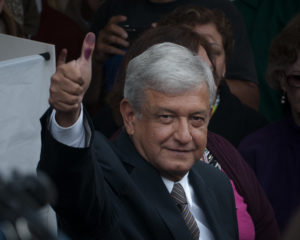
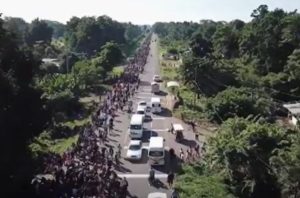
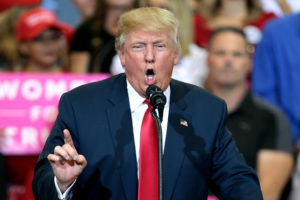
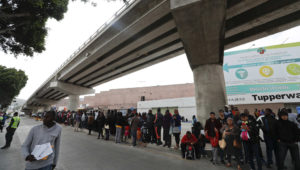
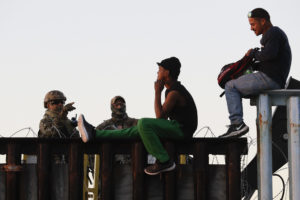
You need to be a supporter to comment.
There are currently no responses to this article.
Be the first to respond.